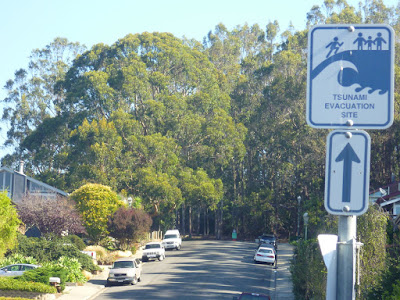 |
| View of Fallen Leaf Lake and Lake Tahoe from upper Angora Lake Trail |
 |
| Angora Lake Trail |
From the ridge, it is only a short, level hike to the parking area of the Angora Lakes Resort. Your effort to come up here from a public parking lot at Fallen Leaf Lake will save you the $7 parking fee at the resort entrance (and a bumpy ride over the rough Angora Ridge Road). The unpaved resort path leads uphill to the lower Angora Lake, with several cabins to your left. The public path continues alongside the lake. A short incline leads to the upper Angora Lake, which is semicircularly surrounded by rustic cabins, while the opposite lake side is bordered by steep slopes and cliffs.
 |
| Lower Angora Lake, early October 2015 |
 |
| The shallow water of the upper Angora Lake |
Getting to the Angora Lake trailhead west of the Fallen Leaf Lake Marina and Store
The trailhead is located between the Fallen Leaf Chapel and the Fallen Leaf Fire Station next to Fallen Leaf Road. The writing on the trailhead sign is fading and needs some fresh paint to better contrast its background.
To get there, go south on Fallen Leaf Road from its junction with Highway 89, just west of Camp Richardson at the outskirts of South Lake Tahoe. Follow Fallen Leaf Road for about 4.5 miles. Alongside Fallen Leaf Lake, this is a narrow single-lane road through lake-side neighborhoods with turn-outs. At the lake's end, the chapel and fire station is on the left side of the road. If you don't find parking there, consider taking the paved, narrow road—uphill and alongside Glen Alpine Creek—to the public parking area at the Glen Alpine trailhead and walk back the half mile to the Angora Lake trailhead.































